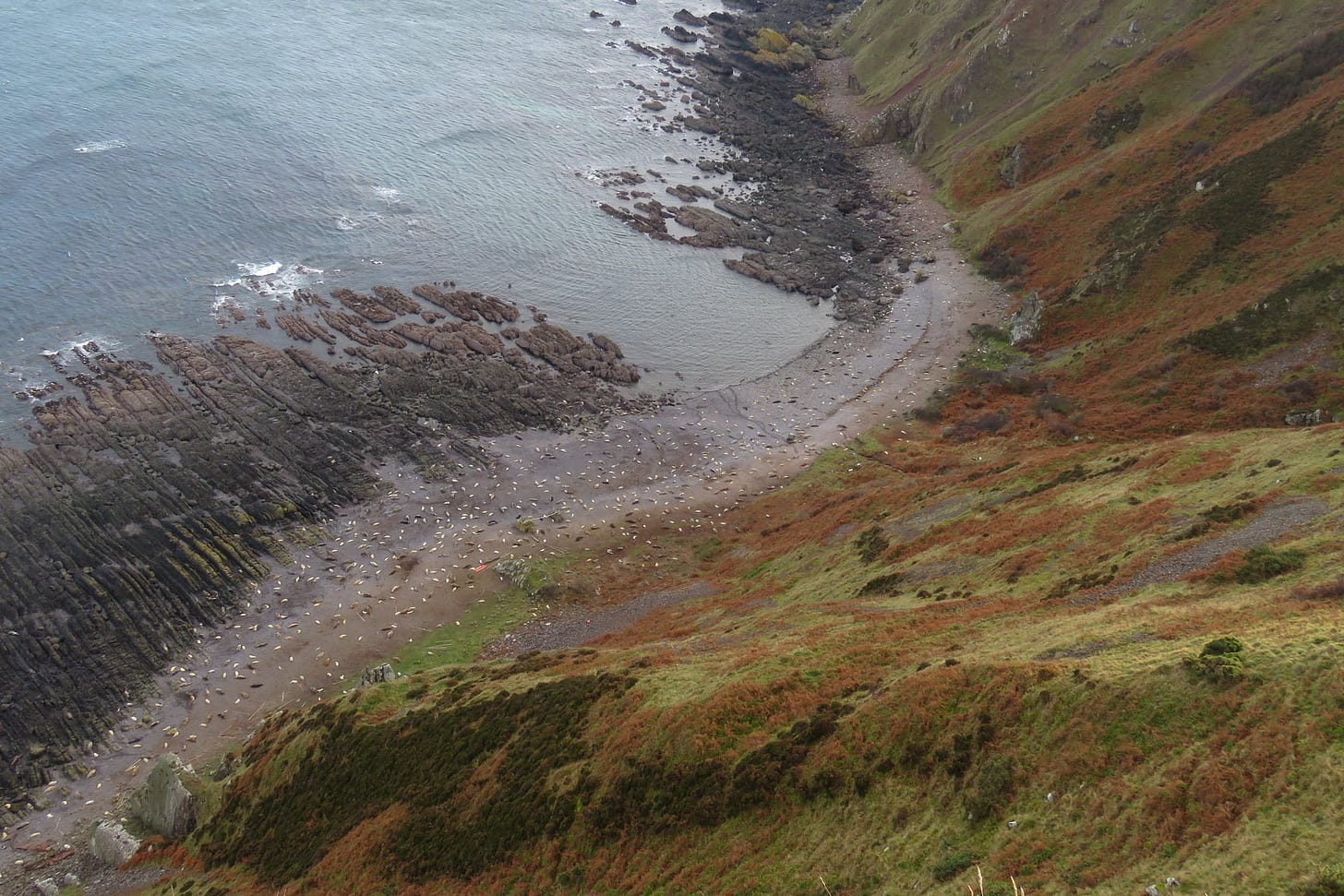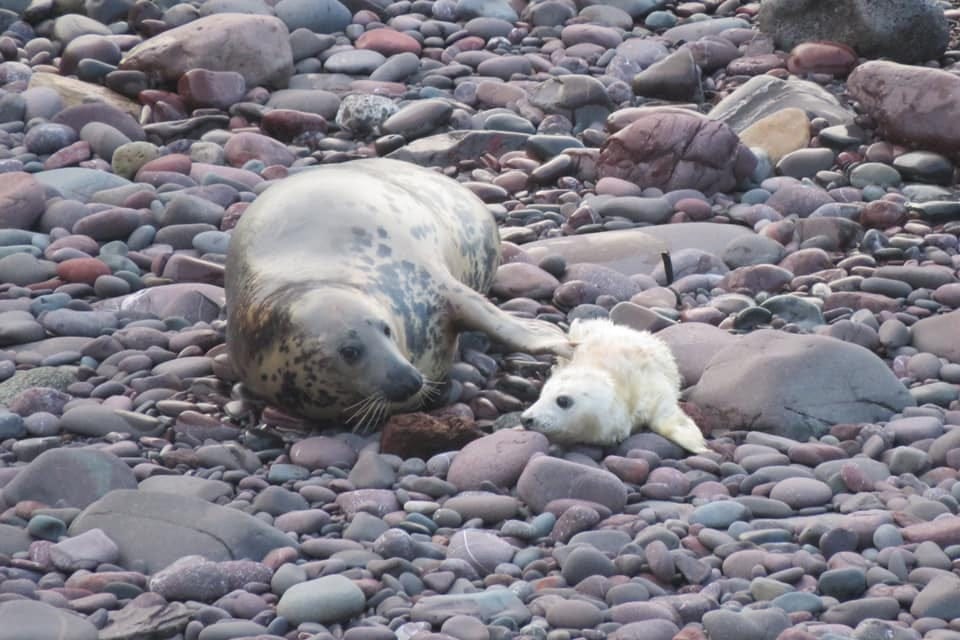'No selfies': A spotters guide to the east coast's seal pups
Plus: A surreal homecoming at the Filmhouse for playwright David Ireland
Coastal walks always seem unfairly hard. The apparently flat clifftops and bays unfailingly offer unexpectedly steep hills, uneven ground and, at this time of year, an icy North Sea wind to add to the mix.
And yet those brave souls who venture across our coasts in autumn could be in for a delightful, adorable reward. Hauled up on some of the nation’s most exposed, jagged beaches and rocky outcrops are more than 40,000 grey seals with their newborn pups. These tiny white fluffballs, with their large round eyes and teddy-bear snouts, will spend a short weaning period on our beaches before shedding their fur and heading out to sea. It’s amazing that something so soft can survive in an environment that’s so savage.
I went out to find some of Edinburgh’s local seal pups, and came back with tips on how to spot some for yourself, how to seal-watch responsibly, and a seriously melted heart.

Where to see seal pups
Scotland is home to around 36% of the global population of grey seals. Female seals (rather unhelpfully called cows) return to the same breeding ground each year to give birth in the autumn months. Compared to the smaller, more comfort-seeking Harbour seals, these animals prefer exposed and rough coastline as their home. While there have been sightings of grey seals all over the coast of East Lothian, Fife and the Borders in the last three years, the best-known breeding grounds are on islands in the Firth (Craigleith, Bass Rock, and the Isle of May) and on the shores around St Abbs Head Nature Reserve.





